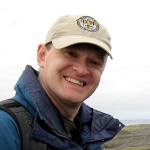Leverhulme Trust
Research Project Grants
Social sciences
- Award winner: David Ceri Jones
- Institution: Aberystwyth University
- Value: £115,5
George Whitefield (1714-70) and transatlantic Protestantism
- Award winner: Thomas A. Heslop
- Institution: University of East Anglia
- Value: £193,131
The medieval parish churches of Norwich: city, community and architecture
Sciences
- Award winner: David Salt
- Institution: University of Aberdeen
- Value: £225,631
Mapping radial ion-transport pathways in plant roots with cell-type specific resolution
- Award winner: Cesare Tronci
- Institution: University of Surrey
- Value: £252,676
From geometry to kinetic-fluid systems (and back)
European Commission
Marie Curie International Incoming Fellowship
- Award winner: Lydia Hallis
- Institution: University of Glasgow
- Value: £280,000
Research on the history of Mars by analysis of meteorites – in collaboration with colleagues in the School of Geographical and Earth Sciences
Arts and Humanities Research Council
Research grants
- Award winner: Clive Gamble
- Institution: University of Southampton
- Value: £559,382
Crossing the threshold: the evolution of place and landscape in earliest prehistory
- Award winner: David Cooper
- Institution: University of Leeds
- Value: £466,856
The professional career and output of Trevor Jones
Economic and Social Research Council
ESRC/DFID Joint Scheme for Research on International Development (Poverty Alleviation)
- Award winner: Nicola Yeates
- Institution: The Open University
- Value: £500,000
Regionalism and poverty reduction: a comparative analysis of UNASUR and SADC
Biotechnology and Biological Sciences Research Council
- Award winner: Steven Spoel
- Institution: University of Edinburgh
- Value: £467,309
Licensing transcription activator activity with ubiquitin time clocks
- Award winner: Donna Lloyd
- Institution: University of Leeds
- Value: £346,336
The feeling of what (does not) happen: a multimodal neurobehavioural account of somatosensory misperceptions
In detail

Natural Environment Research Council
Award winner: Philip Benson
Institution: University of Portsmouth
Value: £81,504
Hydro-fracture in the laboratory: linking fracture networks to permeability and seismicity using rock physics as a laboratory tool
The project will investigate the risks of hydraulic fracking – a technique designed to recover gas and oil from shale rock. The method has drawn criticism over concerns it will cause earthquakes and water contamination. But Philip Benson says it is not a new process and has been used safely in oil and water wells. He does note that when fracking occurs, seismic energy is released in the form of a small earthquake that could “disturb the stability of local geological formation and cause distress to the local population.” His study will use rock physics to assess the risks and will look at how rocks deform and fracture when fluid is injected at high pressure.
Register to continue
Why register?
- Registration is free and only takes a moment
- Once registered, you can read 3 articles a month
- Sign up for our newsletter
Subscribe
Or subscribe for unlimited access to:
- Unlimited access to news, views, insights & reviews
- Digital editions
- Digital access to THE’s university and college rankings analysis
Already registered or a current subscriber?

